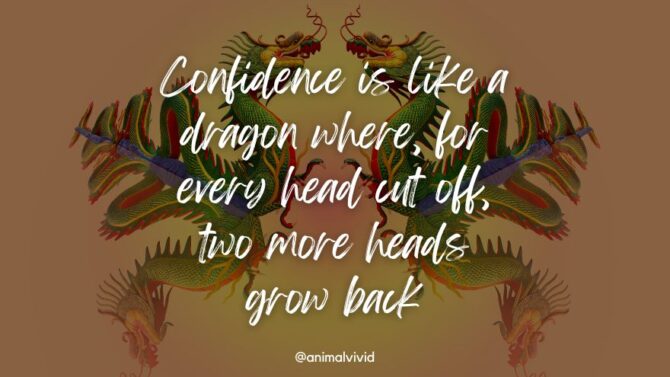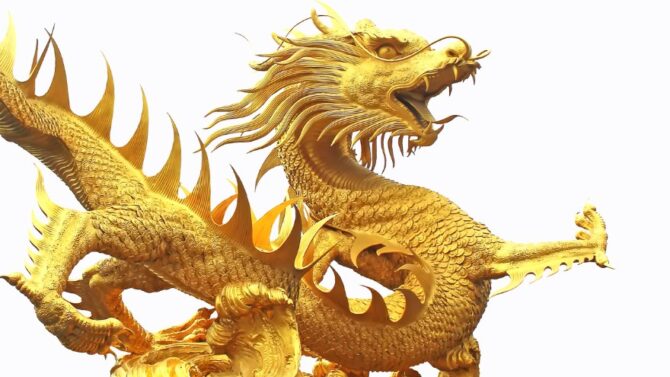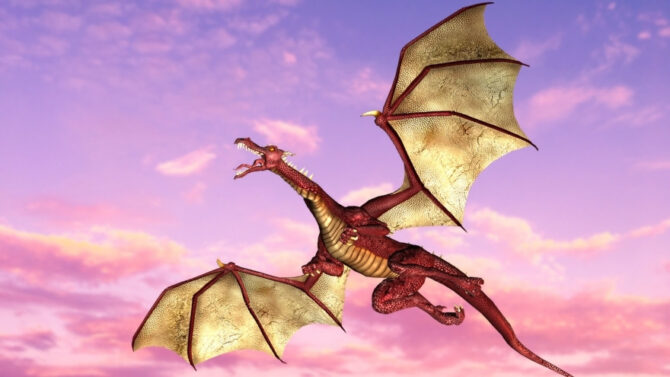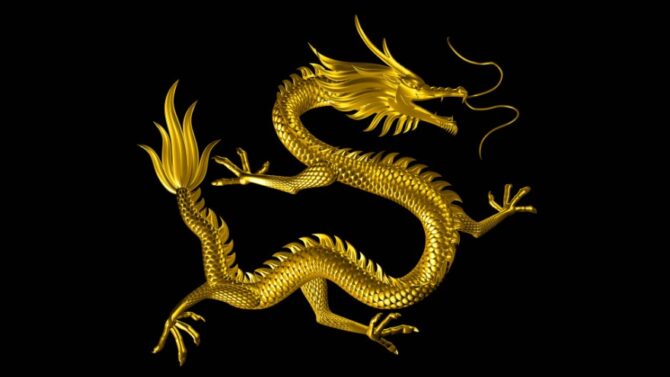Dragons have long been relegated to folklore and fantasy movies, as many experts state that there is no evidence these creatures exist.
However, we’re here to prove otherwise. Dragons exist, and they live amongst us today…but not in the way you see in the media.
The large, fire-breathing monsters are myths, but real-life dragons exist on earth.
Some real dragons that live up to their names include the komodo dragon, ruby seadragon, blue dragon sea slug, pink dragon millipede, black dragonfish, and more.
Let’s explore these creatures and some interesting things to learn about them.
Real-Life Dragons that Exist on Earth Today
1. Komodo Dragon
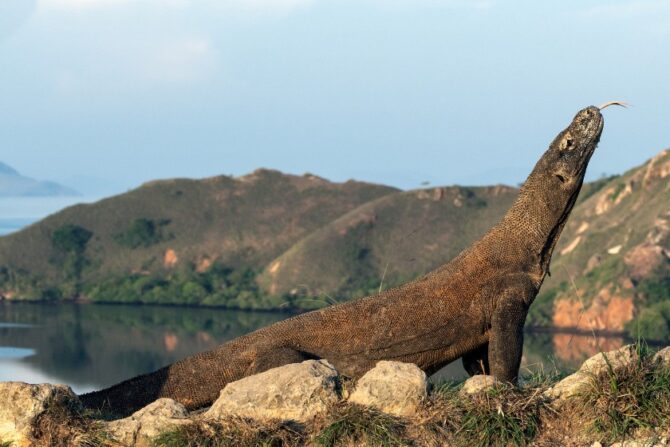
- Scientific Name: Varanus komodoensis
- Range: Indonesia
- Habitat: dry, open grasslands, savannas,
- Conservation Status: Endangered
The Komodo dragon is the largest extant lizard in the world, big enough to potentially eat a human.1
It has consumed human corpses and bitten living people, though it may not eat humans as live prey.
The Komodo dragon is endemic to Indonesia, specifically on the islands of Komodo, Rinca, Flores, and Gili Montang. It is also called the Komodo monitor.
Weighing up to 300 pounds, these lizards are undoubtedly dangerous and strong apex predators.
They take down prey using a combination of stealth, venom, and claws.
Younger ones used to climb with these claws, but as they grew older, their size no longer allow for that. They also feed on carrion.
2. Bearded Dragon
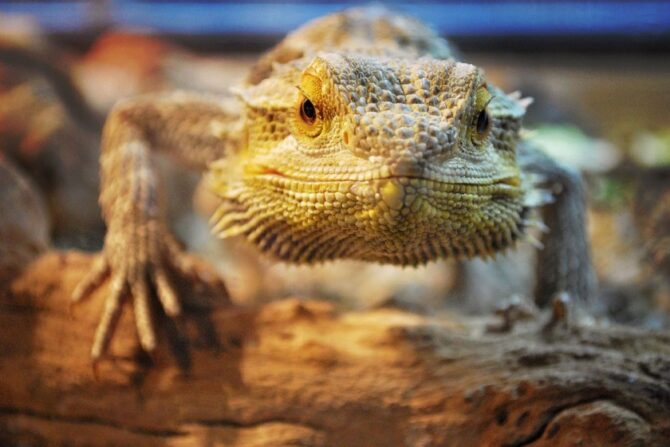
- Scientific Name: Pogona
- Range: Australia
- Habitat: Deserts, woodlands, scrublands
- Conservation Status: Not Extinct
The bearded dragon is any lizard species that belongs to the Pogona genus, characterized by the beard at the underside of the throat.
Bearded dragons live mainly in Australia, where they stay in a variety of habitats like deserts, woodlands, and shrublands.
Unlike the Komodo, the bearded dragon is an omnivore, feeding on both animals and plants.
Examples of what it feeds on are worms, crickets, cockroaches, kale, and okra.
These animals are also known to be territorial, with males being more aggressive than females.
3. Shocking Pink Dragon Millipede

- Scientific Name: Desmoxytes purpurosea
- Range: Thailand
- Habitat: Open on leaf litter
- Conservation Status: Not extinct
The shocking pink dragon millipede was described in 2007 and as of recent remains new and under-researched.2
As the name implies, the millipede comes with a bright pink color which hints at its toxicity.
This is similar to some other brightly colored animals like the golden poison frog.
The shocking pink dragon millipede produces cyanide, a highly effective poison that it uses as a form of defense against predators.
Cyanide is a killer, and not as painlessly as was once believed.3 This creature can thus be as dangerous as an actual dragon, at least in terms of human mortality.
4. Blue Dragon Sea Slug
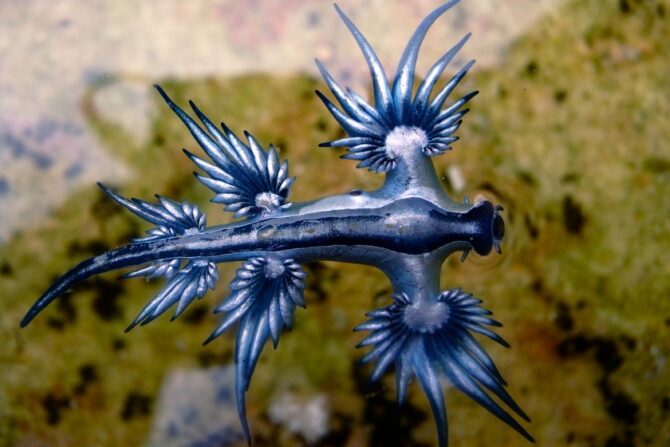
- Scientific Name: Glaucus atlanticus
- Range: South Africa, Europe, Mozambique, Australia, and possibly worldwide
- Habitat: Ocean
- Conservation Status: Not Extinct
The blue dragon sea slug goes by many other names like the sea dragon, the sea swallow, the blue dragon, the blue glaucus, and the blue sea slug, among others.
It may occur worldwide, and there have been records in Africa, Australia, and Europe.
The blue dragon sea slug is a predator of the Portuguese man-of-war. Its main aim when it meets this prey is to steal the stinging cells known as nematocysts.4
The blue dragon, in turn, uses the stinging cells as protection against animals that may want to prey on it.
5. Ruby Seadragon
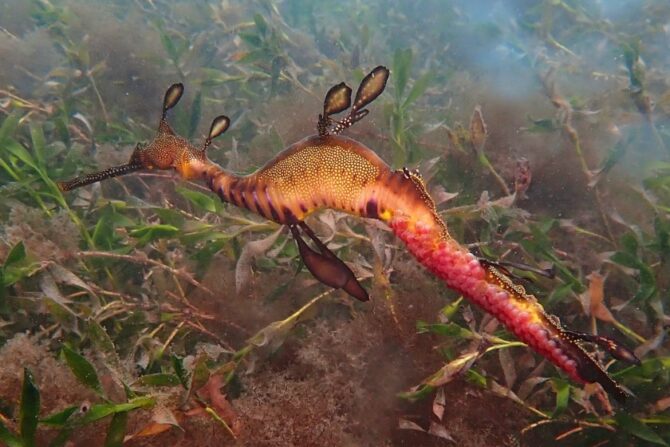
- Scientific Name: Phyllopteryx dewysea
- Range: Western Australia
- Habitat: Coast
- Conservation Status: Data deficient
The ruby seadragon is an underwater creature from the same family as the seahorse, the Syngnanthidae.
It lives on the western side of Australia, specifically on the coast. Seadragons, in general, are quite rare, with the ruby being the third seadragon species alive.
Rather than make them stand out, the ruby red helps this creature camouflage.
When it is underwater, the red color gets filtered, making them appear black underwater. This helps them avoid predators.
6. Black Dragonfish
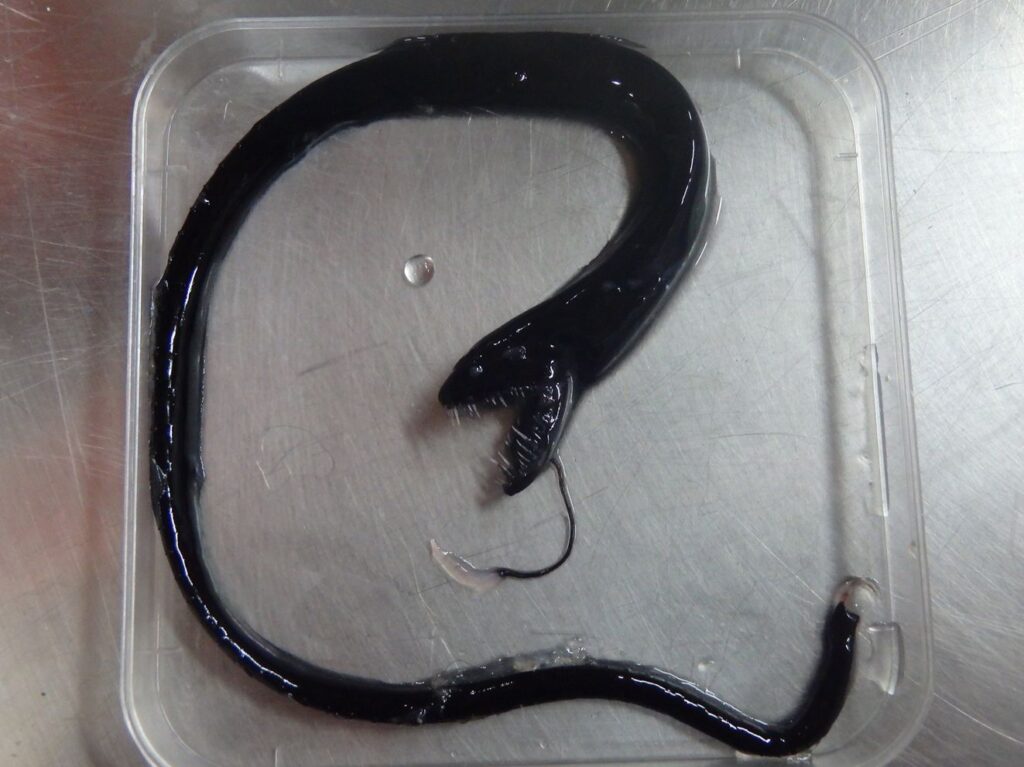
- Scientific Name: Idiacanthus atlanticus
- Range: Subtropical and temperate waters
- Conservation Status: Not extinct
The black dragonfish is fully known as the common black dragonfish, and at first glance, it looks more like an extraterrestrial creature.
Though there’s the “black” in its name, the black dragonfish is not always that color.
Males are different from females as the latter is the black gender. Males are brown. Females are sharp and bigger.
As an underwater creature, the black dragonfish stays in subtropical and temperate waters, usually at a depth.
It is bioluminescent and uses its light to navigate the deep.
7. Flying Dragon
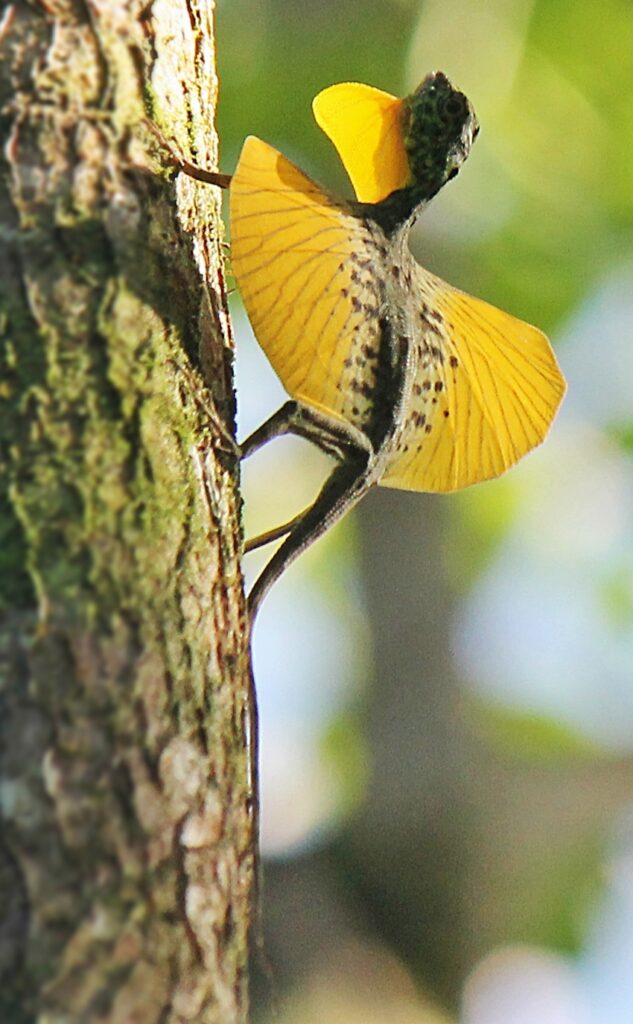
- Scientific Name: Draco
- Range: Southeast Asia
- Habitat: Tropical rainforests
- Conservation Status: Not extinct
The flying dragon (also called the flying lizard or gliding lizard) is the common term for the genus known as Draco.
These animals are arboreal, and so named because they can glide thanks to membranes that become like wings when extended.
These animals are insectivores, feeding on whatever insects they pick from trees.
Except when they are gliding through, flying dragons are masters at camouflage, which helps when going after insects.
8. Chinese Water Dragon

- Scientific Name: Physignathus cocinicus
- Range: Southeast Asia
- Habitat: Forests
- Conservation Status: Vulnerable
The Chinese water dragon is also known as the Asian water dragon, green water dragon, and Thai water dragon.
It lives in both China and mainland Southeast Asia where they inhabit the banks of lakes and streams.
This creature is arboreal and takes the stream or lake as a form of protection when danger looms.
It can both swim and remain submerged, two skills that keep it alive. It is diurnal and omnivorous, feeding on both vegetation and insects.
9. Leafy Seadragon
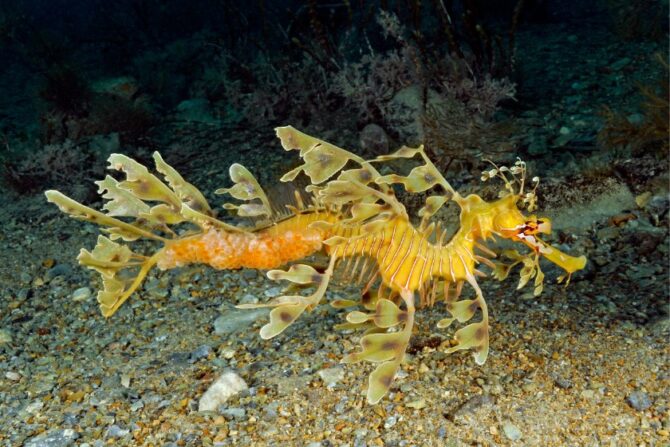
- Scientific Name: Phycodurus eques
- Range: Australia
- Habitat: Coasts
- Conservation Status: Least Concern
The leafy seadragon is also known as the Glauert seadragon. It belongs to the genus Phycodurus, where it is the only member.
Similar to the ruby seadragon, this creature is in the same family as seahorses.
It is a native of Australia, staying on the Northern and Southern coasts.
This seadragon is so named because of the protrusions all over, shaped like a leaf.
Though they have fins, the latter is small and isn’t visible, making it seem like a seadragon.
Conclusion
Real dragons don’t breathe fire or terrorize cities, but they have different tricks under their sleeves, like poison and stolen stinging cells. Some can even fly.
References & Notes
- Komodo dragon. Smithsonian’s National Zoo.
- The shocking pink dragon millipede, Desmoxytes purpurosea, a colourful new species from Thailand (Diplopoda: Polydesmida: Paradoxosomatidae). Zootaxa.
- The Science Behind How Cyanide Kills You. Labroots.
- The nematocyst: a molecular map of the cnidarian stinging organelle. The International Journal of Developmental Biology.

